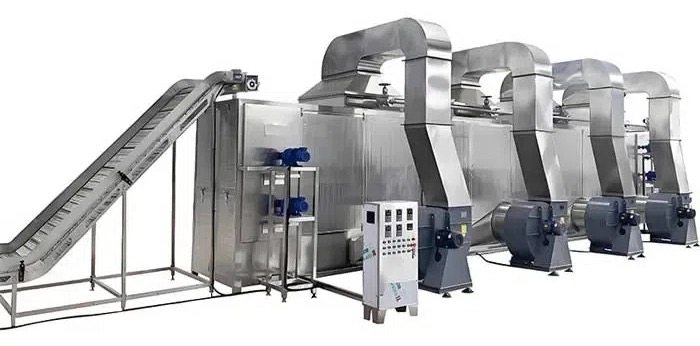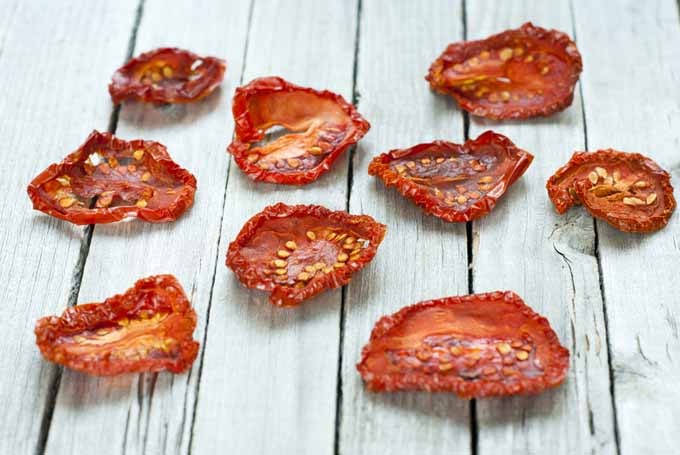In recent years, the food industry has seen significant advancements in drying technologies, particularly with the development of penetration type dryers. These machines are designed to efficiently dry a variety of food products, including nuts, spices, seeds, and beans, while offering substantial energy savings. This article explores the innovations in energy-saving technologies for penetration type dryers, highlighting their benefits, features, and applications in the food industry.

Introduction to Penetration Type Dryers
Penetration type dryers are engineered to handle products that can be stacked together, making them ideal for drying a wide range of food items. These machines utilize a patented half-vacuum air duct design, ensuring even drying even when products are stacked. This design is particularly energy-efficient, using only 25% of the electricity required by traditional dryers.
Key Features of Penetration Type Dryers
1. Adjustable Temperature Control: These dryers offer adjustable temperature settings from 18°C to 80°C, allowing for precise control over the drying process. This flexibility is crucial for different types of food products, each requiring specific temperature conditions for optimal drying.
2. Dehumidification Function: The dehumidification function helps maintain a controlled humidity environment, essential for preventing moisture-related spoilage.
3. Energy Efficiency: By consuming significantly less energy than traditional drying methods, these machines are highly cost-effective and environmentally friendly.
Innovations in Energy Saving Technologies
The energy efficiency of penetration type dryers is a significant innovation in the field of food drying. By using less electricity, these dryers not only reduce operational costs but also contribute to a more sustainable food processing environment.
Advanced Temperature Control Systems
Modern penetration type dryers often include sophisticated temperature control systems that can automatically adjust heating and cooling to maintain optimal drying conditions. This not only ensures product quality but also reduces energy waste by preventing overheating.
Improved Air Circulation Designs
The half-vacuum air duct design in these dryers facilitates better air circulation, crucial for uniform drying. This design ensures that all products, even when stacked, receive consistent airflow, leading to faster and more efficient drying.
Applications and Benefits
Penetration type dryers are versatile and can be used for drying a variety of food products:
1. Nuts and Seeds: Ideal for drying peanuts, sunflower seeds, pumpkin seeds, etc.
2. Spices: Suitable for drying cardamom, cloves, red pepper, aniseed, etc.
3. Beans and Cocoa: Effective for drying coffee beans and cocoa beans.
The energy efficiency of these dryers has led to significant reductions in energy costs and improvements in product quality for several food manufacturers. For instance, a nut processing facility in Asia reported a 30% reduction in energy costs and a 20% increase in production efficiency due to the uniform drying capabilities.

Enhanced Operational Efficiency
Penetration type dryers also enhance operational efficiency by allowing for continuous production cycles. Unlike traditional drying methods that require batch processing, these machines can handle large volumes of products without significant downtime. This feature is particularly beneficial for large-scale food processing operations where maintaining high production levels is crucial.
Integration with Existing Systems
These dryers can be easily integrated into existing food processing lines, making them a practical choice for both new and established facilities. Their compact design and modular construction allow for flexible installation options, accommodating different plant layouts and production requirements.
Sustainability and Environmental Impact
The environmental benefits of penetration type dryers are substantial. By reducing energy consumption, these machines lower carbon emissions and contribute to a more sustainable food production process. This aligns with global efforts to reduce environmental impact and promote eco-friendly practices in the food industry.
Compliance with Environmental Regulations
Many countries have implemented strict environmental regulations to reduce industrial emissions. Penetration type dryers help food manufacturers comply with these regulations by offering a cleaner and more efficient drying solution. This not only reduces the risk of non-compliance fines but also enhances the company's reputation as an environmentally responsible business.
Future Developments and Trends
As technology continues to evolve, penetration type dryers are expected to incorporate even more advanced features. Future developments may include:
1. AI-Powered Monitoring Systems: These systems can predict and adjust drying conditions based on real-time data, further optimizing energy efficiency and product quality.
2. Renewable Energy Integration: Integrating renewable energy sources, such as solar or wind power, could further reduce the carbon footprint of these machines.
3. Smart Drying Algorithms: Advanced algorithms can analyze product characteristics and environmental conditions to optimize the drying process, ensuring the best possible outcomes with minimal energy use.
Conclusion
Innovations in energy-saving technologies for penetration type dryers have revolutionized the food drying industry by offering efficient, cost-effective, and environmentally friendly solutions. These machines are ideal for both small-scale and large-scale operations, providing adjustable temperature controls and dehumidification functions that cater to various food types. As the demand for sustainable practices continues to grow, penetration type dryers are poised to play a crucial role in enhancing operational efficiency and reducing environmental impact in the food industry.

FAQ
1. What are the key features of penetration type dryers?
Penetration type dryers offer adjustable temperature settings from 18°C to 80°C, a dehumidification function, and use only 25% of the electricity required by traditional dryers, making them highly energy-efficient.
2. How do penetration type dryers ensure uniform drying?
The patented half-vacuum air duct design ensures even drying even when products are stacked, providing consistent airflow throughout the drying process.
3. What types of food products are suitable for penetration type dryers?
These dryers are suitable for drying nuts, spices, seeds, beans, and other similar products that can be stacked together.
4. How do penetration type dryers contribute to sustainability?
By using significantly less energy than traditional drying methods, penetration type dryers reduce carbon emissions and contribute to environmental sustainability.
5. What are the benefits of using penetration type dryers in food processing?
The benefits include reduced energy costs, improved product quality, and enhanced operational efficiency, making them a valuable asset in the food industry.
Citations:
[1] https://www.dryeratech.com/cost-effective-solutions-investing-in-a-penetration-type-dryer.html
[2] https://www.jimdry.com/integrated-stacked-type-dryer.html
[3] https://patents.google.com/patent/CN110207480A/zh
[4] https://www.dryeratech.com/energy-efficiency-the-advantage-of-penetration-type-dryers.html
[5] https://www.pneumatech.com/nl/news/the-new-ph-he-adsorption-dryers-innovative-technology-unprecedented-results
[6] https://patents.google.com/patent/CN111575986A/zh
[7] https://www.aimheatpump.com/products-78591
[8] https://pressroom.geappliances.com/news/ge-profileTM-continues-to-harness-cutting-edge-technology-and-further-game-changing-innovation-with-its-expanded-laundry-portfolio
[9] https://patents.google.com/patent/CN112481977B/zh











